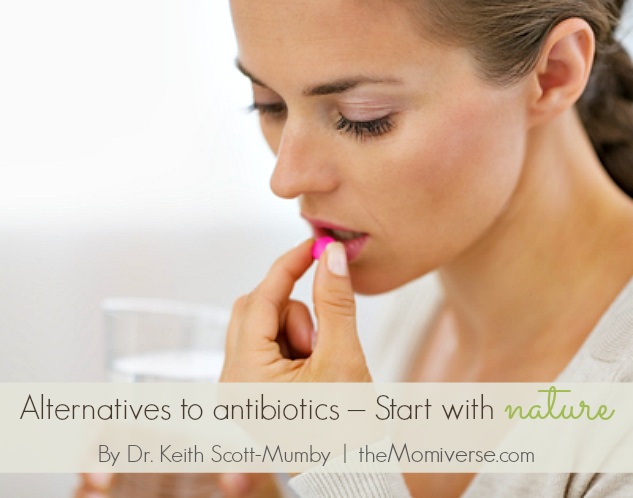
When it comes to killing germs, healing the body, and preventing future illness, you have two powerful “natural antibiotics” available to you without a prescription, doctor’s appointment, cost, and risk of dangerous pharmaceutical side effects.
Can you guess what they are? Plenty of sunshine and fresh air. Does it sound too good to be true?
These two alternatives to antibiotics are some of the oldest concepts in health and prevention of disease. Florence Nightingale actively promoted them as an effective way to save her patients. Her well documented measures of airing out sick wards, exposing patient rooms to sunlight, and many other changes in hygiene drastically improved how many of her patients lived!
Fresh air – An ancient new antibiotic
In her writings, she explained, “It is necessary to renew the air round a sick person frequently.” This and other cutting edge techniques were ahead of their time and saved many lives in the now famous Nightingale wards.
Scientists in the United Kingdom proved this theory just recently and published their results in the New Science journal. Two microbiologists with the Porton-Down bio-warfare facility wanted to know how long airborne viruses would leave if released on the population at large.
E. coli – a bacteria that strikes terror into the hearts of millions – survived only two hours when exposed to fresh air. Those spores that remained in a controlled air environment survived. Fresh air does not simply dilute dangerous pathogens, it actually destroys them.
It is unfortunate that citizens of developed countries spend less time than ever before outside – even during the much anticipated summer months.
The natural benefits of fresh air
- Being outside triggers feelings of peace, relaxation, and happiness
- Taking a walk during a rainstorm inspires feelings of calm
- Boosts your energy levels naturally
- Disperses airborne bacteria that thrive in indoor environments
- Promotes more oxygen intake
- Helps the lungs expel toxins more effectively
- Meditation outside improves mental clarity and critical thinking
As an antibiotic alternative, fresh air is free and plentiful. Even if you live in a heavily populated urban area, you need to scope out the nearest park, settle yourself on a bench, and take a deep breath.
Short-lived molecules called hydroxyl radicals are produced as a result of interactions between our ozone and water. Organic chemicals produced by plant life cause further reactions that destroy bacteria.
These same reactions can be simulated artificially and with the growing urbanization of our planet, such devices may become necessary.
Sunshine – The answer to health you’ve been missing
I talk often about the benefits of responsible exposure to sunlight. It is probably my favorite alternative to antibiotics and the most effective.
The natural benefits of sunlight
- Kills airborne bacteria
- Aids in wound healing by killing bacteria on the skin’s surface
- Boosts your body’s production of vitamin D
- Reduces your risk of cancer
- Greatly improves the immune system function
- Improves mood, fights depression, and prevents loss of brain cognition
- Strengthens teeth and bones
- Lowers cholesterol and fights atherosclerosis (hardening of the arteries)
- Raises blood oxygen levels naturally
- Helps to control body weight by regulating appetite
- Improves the quality of your sleep
During the worst of the tuberculosis outbreaks at the turn of the 19th century, doctors opened clinics that focused on using fresh air and sunshine to treat their patients.
The buildings of the modern world are sealed up tight against dust, heat, cold, and sound. Unfortunately, they are also sealed against fresh air and sunshine. Most people spend the majority of their lives inside one building or another for work, entertainment, or socialization.
We need to get outside for better health overall and alternatives to antibiotics.
Ultraviolet light is naturally antiseptic and when kept under a narrow spectrum wavelength of 207 nanometers (nm), it is safe to use without any adverse effects to your DNA.
Columbia University Medical Center discovered that this practice dramatically lowers the incidence of infection from surgical procedures. Even Methicillin-resistant Staphylococcus aureus (MRSA) bacteria cannot live against such UV light.
Annually, more than 640,000 people in the United States fall victim to a hospital acquired infection (HAI) – exposure to bacteria from a trusted medical environment. Many of these bacteria are antibiotic resistant, which claims the lives of more than 75,000 people yearly.
You don’t have to have a fancy light to prevent infection. Safe and responsible exposure is an incredible way to improve health and fight disease. Allow the skin of your face and hands to feel the effects of the sun for 10-15 minutes in the morning or late afternoon. Any longer and you’ll need to apply a natural sunscreen or use protective clothing.
Alternatives to antibiotics are finally gaining the attention they deserve. The World Health Organization (WHO) urges the use of ventilation to promote healing and a solar clinic is being created for citizens of India suffering from drug-resistance tuberculosis.
Florence Nightingale would be proud that we’ve come full circle.
This Week's Articles Read, learn, live
-
 Summertime grilled vegetables
Summertime grilled vegetables
-
 5 Ways to make this summer full of unforgettable family fun
5 Ways to make this summer full of unforgettable family fun
-
 10 Reasons to take a family vacation in Puerto Vallarta
10 Reasons to take a family vacation in Puerto Vallarta
-
 5 Fun tips for spring cleaning with kids
5 Fun tips for spring cleaning with kids
-
 10 chick flicks with New Year’s Eve scenes
10 chick flicks with New Year’s Eve scenes
-
 The day after Christmas: 5 ways to handle the biggest downer of the year
The day after Christmas: 5 ways to handle the biggest downer of the year